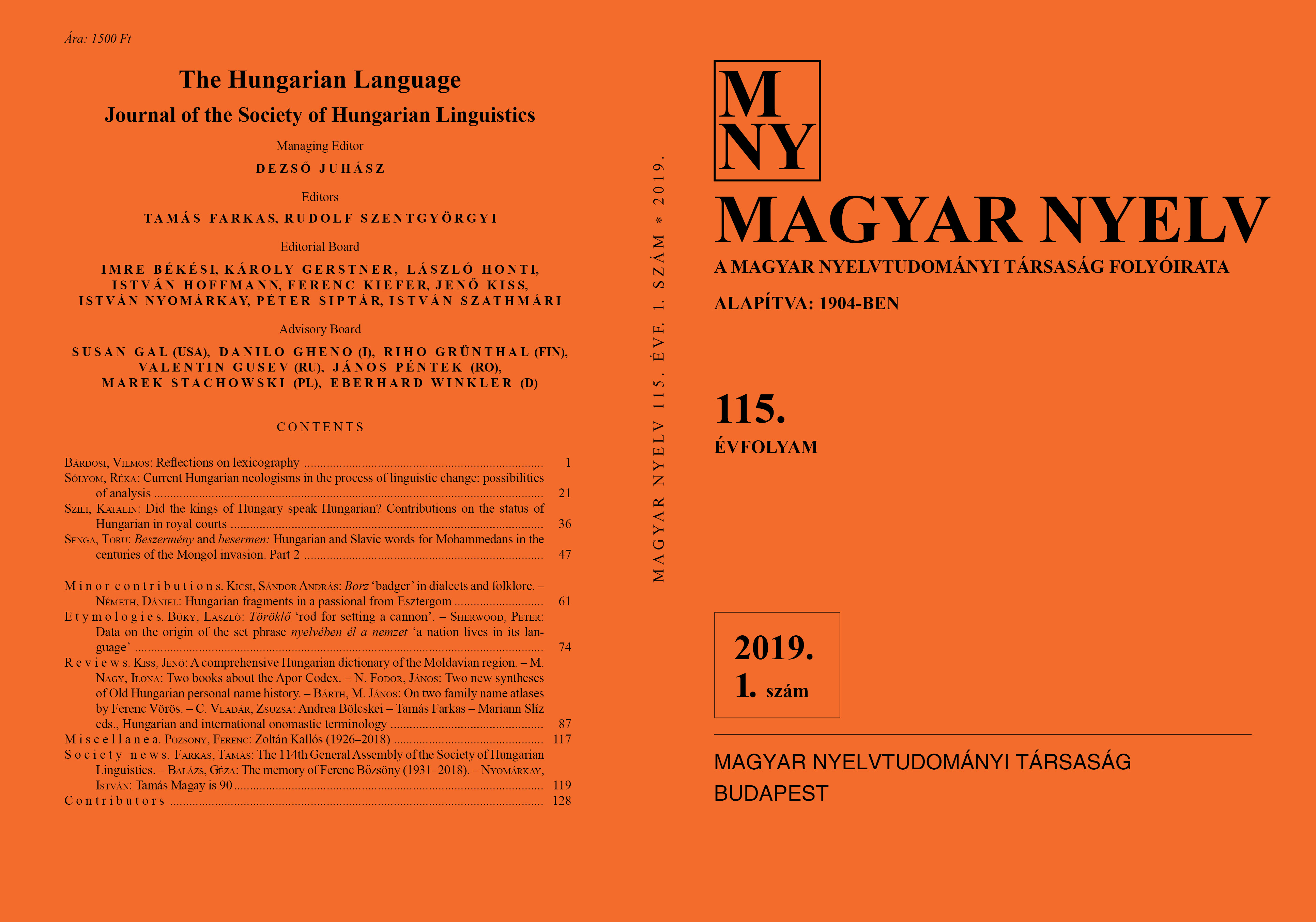Did the kings of Hungary speak Hungarian?
Contributions on the status of Hungarian in royal courts
DOI:
https://doi.org/10.18349/MagyarNyelv.2019.1.36Keywords:
language acquisition, languages learning, mastery of a language, language teacher, language skillsAbstract
Due to well-known historical reasons, quite a few monarchs of Hungary were of foreign origin and their first language was not Hungarian. Hence, the simple issue (that is nevertheless significant for the culture and national self respect of Hungarians) of whether the kings and queens of Hungary spoke Hungarian is surrounded by uncertainty and a number of conjectures. The author’s aim is to collect the available pieces of information, to supplement them by some new pieces, and to inspire further studies of the issue. Relying on her experience and knowledge as a language teacher, she presents a coherent picture of the mastery or otherwise of Hungarian of kings who ruled the country for a substantial amount of time (and their spouses), filling in gaps in the relevant chapters of historical biographies in a number of cases.
Downloads
Published
Issue
Section
License
Copyright (c) 2024 Katalin Szili

This work is licensed under a Creative Commons Attribution-NonCommercial-NoDerivatives 4.0 International License.
Magyar Nyelv is a Diamond Open Access periodical. Documents can be freely downloaded and duplicated in an electronic format, and can be used unchanged and with due reference to the original source. Such use must not serve commercial purposes. In the case of any form of dissemination and use, Hungarian Copyright Act LXXVI/1999 and related laws are to be observed. The electronic version of the journal is subject to the regulations of CC BY-NC-ND (Creative Commons – Attribution-NonCommercial-NoDerivatives).
The journal permits its authors, at no cost and without any temporal limitation, to make pre-print copies of their manuscripts publicly available via email or in their own homepage or that of their institution, or in either closed or free-for-all repositories of their institutions/universities, or other non-profit websites, in the form accepted by the journal editor for publication and even containing amendments on the basis of reviewers’ comments. When the authors publicize their papers in this manner, they have to warn their readers that the manuscript at hand is not the final published version of the work. Once the paper has been published in a printed or online form, the authors are allowed (and advised) to use that (post-print) version for the above purposes. In that case, they have to indicate the exact location and other data of the journal publication. The authors retain the copyright of their papers; however, in the case of an occasional secondary publication, the bibliographical data of the first publication have to be included.



